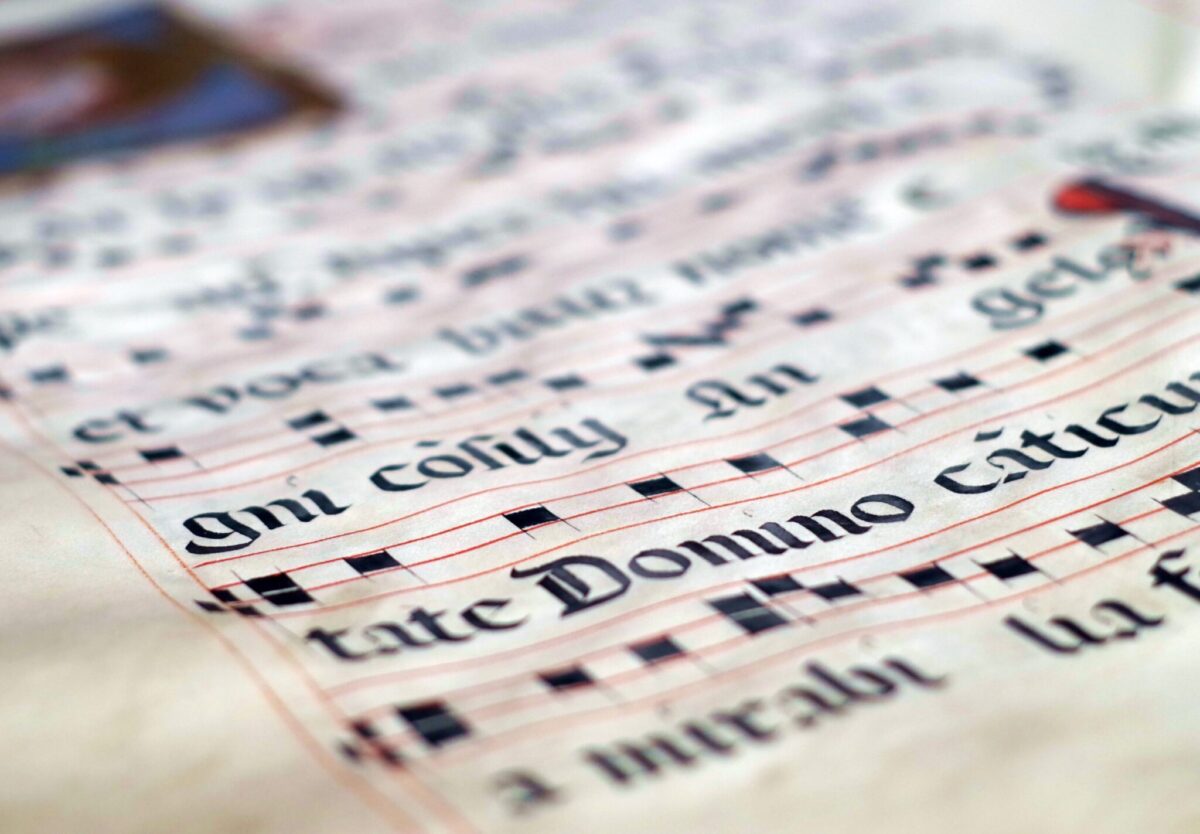Throughout the internet, choral directors are always searching for round and rounds. It’s amazing how overlooked rounds can be as part of a concert. So many choral directors think of the common round as something meant for elementary choirs or struggling ensembles; the reality is that rounds can be show-stopping successes in a well-planned and highly executed performance at all levels.
Rounds can open a concert
Many rounds can be used as a processional to begin a concert set. The key to using a round during a processional is by singing in unison until reaching the final destination. Typically the conductor gives the cue to create the divine harmony. Some rounds end with a fade out while others can end with a full, resonant chord.
Keep in mind that a round sung in unison does not need to feel repetitive. When my choir enters in unison, they split down two aisles before reaching their final destination. Each row takes turn singing the round in unison as the audience hears the sound move across the room. When the singers reach their final destination, I contact the entire choir in unison, creating a full sound for the very first time, before splitting.
Here are two examples of rounds that I believe are great for processionals.
Jubilate Deo
This is the round I use for my Treble Choir as they process. It provides a great entrance and sets the tone for the concert. I recommend each part ending by sustaining their final note, and then fading out in unison.
Music Alone Shall Live
This is a round I used for the ten years I conducted a senior citizen’s choir. I recommend each part fading out when they are done.
Rounds can close a concert
A round can be a recessional and sung as students exit the risers. An ensemble can start in unison and break apart as they leave the risers. It can be a beautiful effect when the singers leave the risers as they split into their own part. A colleague of mine closed his concert with “Now I Walk In Beauty”.
This is a Navajo text that Gregg Smith set to music. I see the round all over the internet. Just search “Now I Walk in Beauty round and rounds” and you will easily find it.
Rounds can envelop an audience
When circling an audience, some songs can truly connect with your audience. One round that I love to use is Dona Nobis Pacem. This three-part round is familiar with most audiences and it’s meaning, grant us peace, can be a beautiful moment in any concert. Rather than fading out, I recommend ending on a three part chord in root position.
Rounds can be substantial concert programming
Some rounds can be programmed mid-program as standard quality repertoire.
Consider two of Mozart’s rounds. You can download either of them for free by clicking the links.
Alleluia Round by Mozart
This round is definitely concert-worthy in most choirs. I recommend singing it once in unison before breaking up into 3 part harmony. This could work with treble voices, tenor/bass voices, or a mix. You may want to end in a 3 part chord. My free downloadable version has the optional ending chord written out.
Check out more round and rounds here!
Lacrimoso son’io, canon
This round is seriously underrated, in my opinion. The lyrics translated from Italian is “I am tearful”. It is beautiful, complex and has a built-in ending chord. The beauty of this round is that the texture changes depending on the voicing. An SSAA round will sound dramatically less complex than SATB, due to the melody switching registers.
There is great depth to this round as it can be a real stand-out in a concert program.
Rounds can deeply move an audience
Some rounds can be come the emotional “meat” of a program. Besides Dona Nobis Pacem, I wrote a round entitled American Memorial Round to honor American’s who died for our freedom.
This piece is highly effective for 9/11 ceremonies, Pearl Harbor Day, Memorial Day, and any time we want to connect to those who we’ve lost. Sometimes a round can have a unique “ending” that comes after the round. I wrote a two-measure “Amen” section that is adaptable for 3 part choirs, SSA, TTB, SAB, etc.
Song likes Dona Nobis Pacem and American Memorial Round can very easily fit into the center of a concert program. I frequently use rounds like these in the center of a 3 song set when performing at meaningful ceremonies or as guest performers at outside events.
American Memorial Round – 4 Part
Rounds can be fun or spark joy
I wrote the Trick or Treat Round to teach students how to articulate “tuh-ricky” consonant pairings such as “tr vs ch” and “dr vs j”. While it’s a great teaching tool, it is also a fun performance song during Halloween. I just recently completed a round that embraces Hanuakkah, Christmas, Kwanzaa, and New Year’s Eve. I still haven’t made a recording, but it is an uplifting round that can easily fit within a holiday concert or a caroling packet.
Trick or Treat; Halloween Round (4 part)
Round and rounds we go in concert final words
I believe many times we over program and make concerts more challenging than what they need to be. Rounds can be a gateway to audience appreciation of choral music. They also allow singers to focus on the beauty of unison singing: pure vowels, crisp consonants, and consistent tone. That beauty can lead to a round being the highlight of a concert!
5 Holidays Rounds; use all year round for special occasions
The 5 Choir ROUNDS I Use Every Year – and WHY!








Leave A Comment